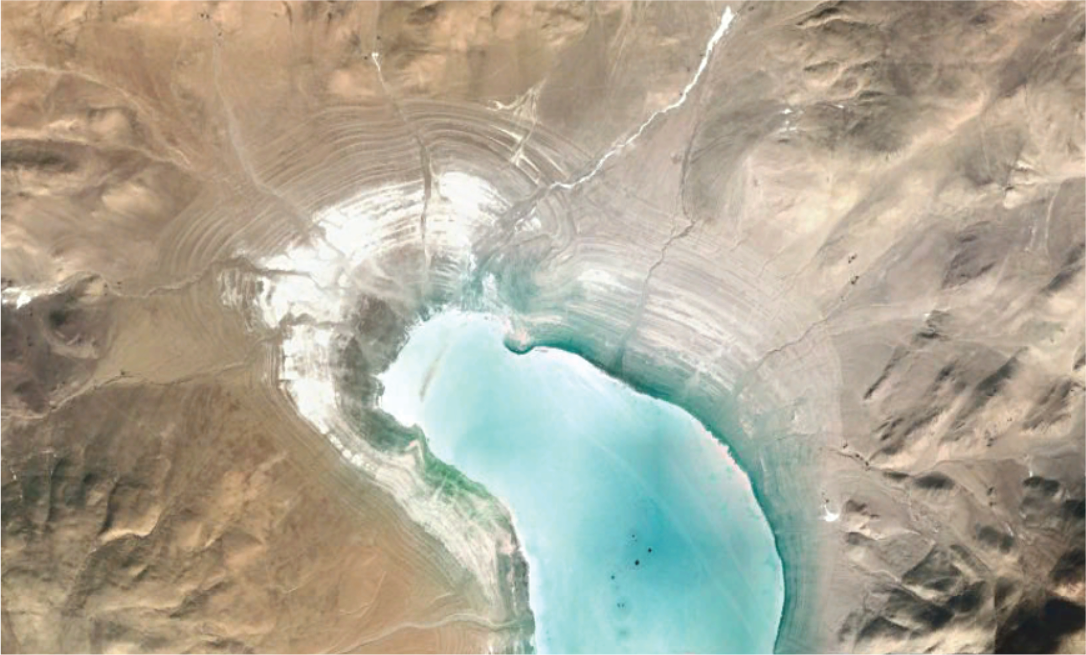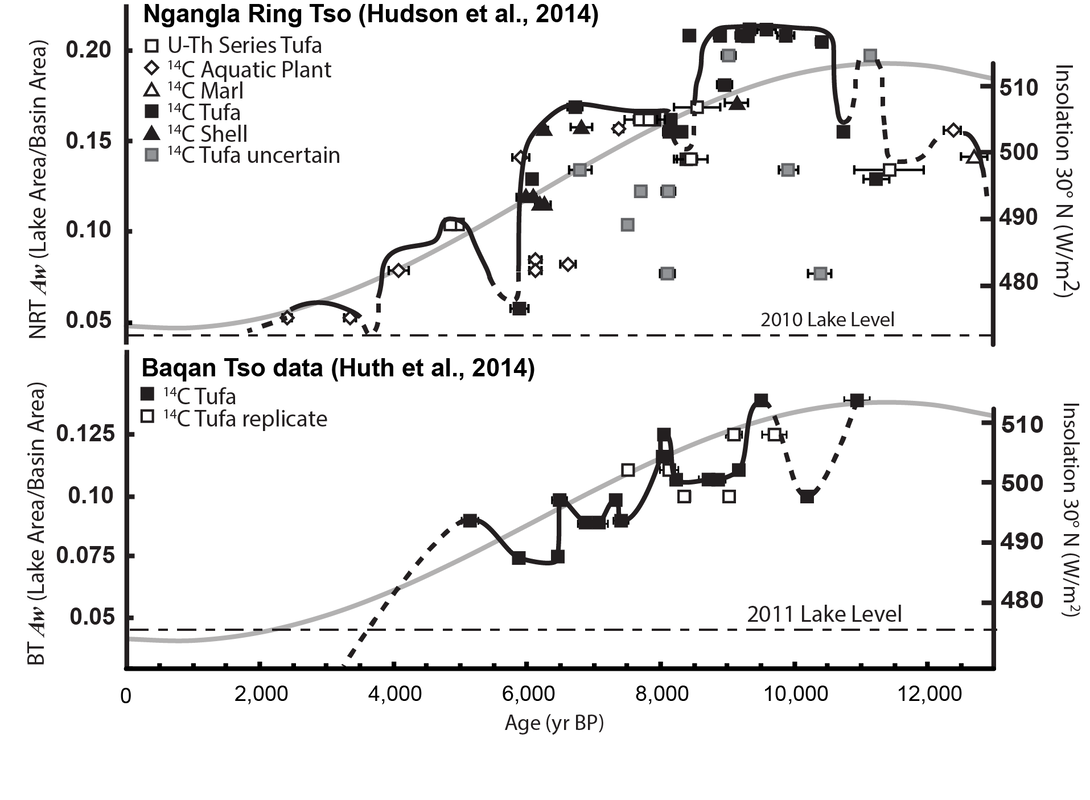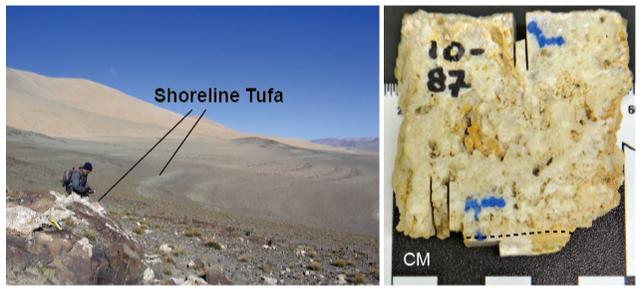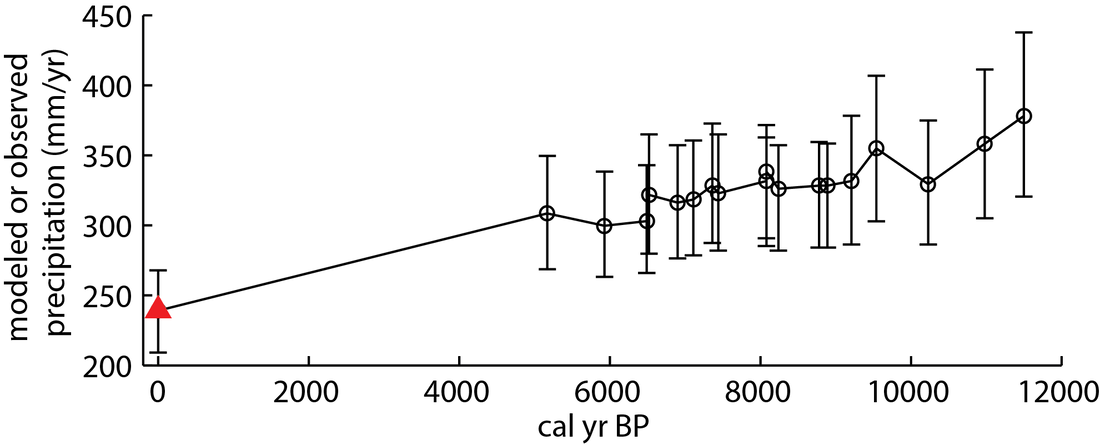|
The Asian Monsoon provides water resources to much of Asia and there is therefore intense interest in how future warming will affect regional water sources. Paleoclimate evidence suggests that even within the Holocene (<12 ka) there were significant changes in water availability on the continent that are important to understand. To better understand the timing and magnitude, as well as the spatial extent, of this variability, my colleagues and I investigated lake and wetland deposits on the Tibetan Plateau. |
|
We used two complementary lake systems, Ngangla Ring Tso and Baqan Tso, to understand water availability. Both lakes are closed-basin lakes, meaning that water only leaves the system through evaporation. This make lake-level much more sensitive to variations in, for example, relative humidity, wind speed, and precipitation amount, than an open-basin lake. When closed-basin lakes are in (near) steady state, where incoming and evaporating water are in equilibrium, the lake can develop prominent shoreline deposits. These deposits may persist through geologic time and leave “bathtub rings” that show how high lake level was in the past. |
|
We additionally investigated the Baqan Tso basin because it had an advantage over the Ngangla Ring Tso basin – it had no evidence of previous glaciation. This meant that changes in lake size could only be due to other climate parameters (e.g., temperature, rainfall, radiative flux, wind speed, relative humidity, albedo), which simplifies modeling. We used a coupled runoff and lake surface evaporation model to simulate the conditions required to sustain ancient lake shorelines. The results suggested that an ~50 % increase in precipitation would have been required to sustain the early Holocene lake highstand at Baqan Tso (380 mm/yr vs. 240 mm/yr modern), a substantial increase in this semi-arid region. |




